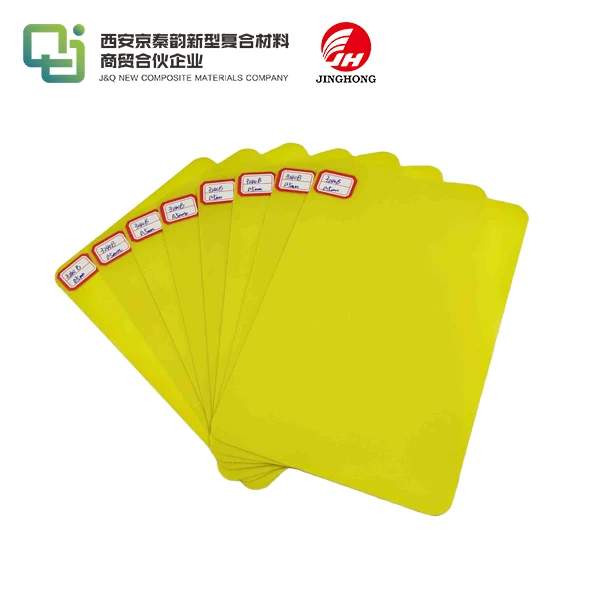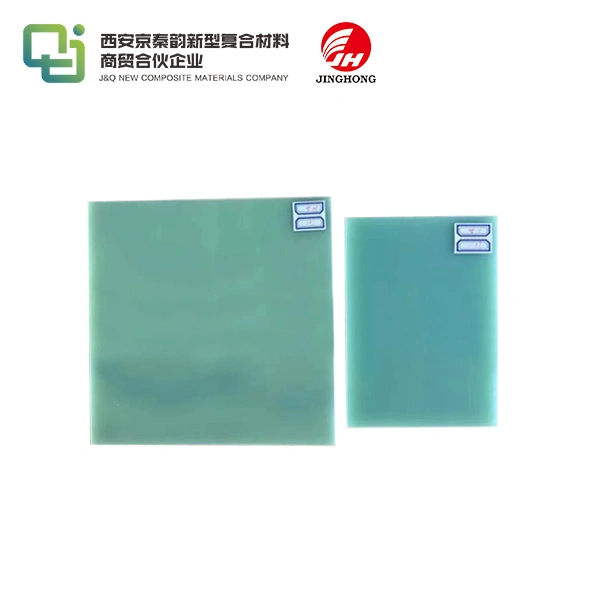What are G10 fiberglass tubes used for?
2024-09-23 17:03:18
G10 fiberglass tubes are a remarkable material, celebrated for their versatility and resilience. As a manufacturer with a global reach, you understand the importance of providing quality materials that meet the diverse needs of your customers. With over 20 years of experience in producing insulating sheets and a decade in foreign trading, J&Q is well-equipped to offer expert insights into the applications of G10 fiberglass tubes. This blog delves into the various uses of G10 fiberglass tubes, highlighting their benefits in different industries and offering valuable information for potential clients.
Understanding G10 Fiberglass Tubes
Composition and Characteristics
G10 fiberglass tubes are made from a composite material consisting of woven fiberglass cloth and epoxy resin. This combination results in a material that is both lightweight and extremely strong. The G10 designation refers to a specific grade of fiberglass-reinforced epoxy laminate known for its high mechanical strength and excellent electrical insulating properties. These tubes boast resistance to wear, moisture, and temperature fluctuations, making them suitable for a wide range of demanding applications.
Comparison to FR4 Fiberglass Tubes
While G10 fiberglass tubes are similar to FR4 fiberglass tubes, the latter is specifically designed to meet flame retardancy requirements. FR4 fiberglass tubes are also made from the same basic materials—fiberglass cloth and epoxy resin—but include additional flame-retardant properties. This makes FR4 epoxy tubes ideal for applications where fire safety is a primary concern. Both G10 and FR4 tubes provide excellent structural integrity and electrical insulation, but the choice between them depends on the specific needs of the application.
Advantages Over Traditional Materials
G10 fiberglass tubes offer several advantages over traditional materials like metal or wood. They are non-conductive, making them safer for electrical applications. Their resistance to moisture and chemicals ensures longevity in harsh environments, unlike metals that may corrode or wood that can rot. Additionally, their lightweight nature reduces transportation costs and makes them easier to handle during installation.
Industrial Applications of G10 Fiberglass Tubes
Electrical and Electronics Industry
G10 fiberglass tubes play a crucial role in the electrical and electronics industry due to their exceptional insulating properties. These tubes are commonly utilized as insulating sleeves, effectively safeguarding sensitive components from electrical interference and ensuring optimal functionality. Their high heat resistance and mechanical stability make them an excellent choice for applications in circuit boards and various electronic assemblies. Additionally, G10 tubes contribute to the overall durability and reliability of electronic devices, helping to extend their lifespan and maintain performance in demanding environments. This combination of features makes G10 fiberglass an indispensable material in modern electrical applications.
Aerospace and Defense
In the aviation and defense areas, G10 fiberglass tubes are exceptionally respected for their noteworthy solidarity to-weight proportion. This characteristic is fundamental in the development of airplane parts, where limiting load while keeping up with underlying respectability is basic for execution and eco-friendliness. Besides, G10's excellent protection from outrageous temperatures and cruel natural circumstances makes it an optimal material for different safeguard applications, like missile casings and radar frameworks. Its solidness and unwavering quality under requesting conditions guarantee that aviation and safeguard hardware can perform ideally, adding to somewhere safe and secure and adequacy in basic missions.
Marine and Automotive Industries
The marine and automotive industries greatly benefit from the distinctive qualities of G10 fiberglass tubes. In marine applications, these tubes are often utilized in the construction of masts, antennas, and various components that demand both durability and resistance to saltwater corrosion, ensuring longevity in harsh marine environments. Meanwhile, in the automotive sector, G10 tubes serve as vital structural supports and reinforcements, enhancing the overall safety and performance of vehicles. Their lightweight yet robust nature contributes to improved fuel efficiency and handling, making them an essential choice for manufacturers looking to optimize both safety and performance in their designs.

Everyday Uses and Emerging Trends
Sports and Recreational Equipment
G10 fiberglass tubes are increasingly popular in the sports and recreation sector due to their unique combination of flexibility, strength, and lightweight properties. These tubes are commonly used in the manufacture of fishing rods, hockey sticks, and various other sporting equipment, where performance and durability are paramount. Their resilience allows them to withstand the physical stresses of active use, while their resistance to environmental factors—such as moisture and UV exposure—ensures that outdoor gear remains reliable over time. As a result, G10 fiberglass is a favored material for athletes and outdoor enthusiasts seeking high-performance equipment that can endure challenging conditions.
Renewable Energy Sector
As the renewable energy sector expands, G10 fiberglass tubes are playing an essential role in the construction of wind turbine blades and solar panel supports. Their exceptional durability and resistance to environmental stressors make them ideal for withstanding harsh weather conditions and prolonged exposure to the elements. This reliability ensures that renewable energy systems operate efficiently over extended periods, minimizing maintenance costs and reducing downtime. By incorporating G10 fiberglass into these applications, manufacturers can enhance the performance and longevity of renewable energy solutions, contributing to a more sustainable energy future while supporting the growing demand for clean energy sources.
Innovative Architectural Designs
Architects and designers are increasingly incorporating G10 fiberglass tubes into innovative construction applications. These tubes offer not only structural support but also aesthetic versatility, allowing for the creation of unique architectural designs that stand out. Their lightweight yet robust characteristics enable designers to experiment with bold shapes and forms, enhancing the visual appeal of buildings while ensuring stability. Whether used in facades, interior features, or structural frameworks, G10 fiberglass tubes facilitate a blend of functionality and artistry. This combination of qualities makes them a favored choice for modern architectural projects that prioritize both design and performance.
Conclusion
G10 fiberglass tubes offer a wide array of benefits and applications across numerous industries. From electrical insulation to aerospace components and beyond, their strength, durability, and versatility make them an indispensable material in modern manufacturing and construction. Additionally, FR4 fiberglass tubes, which share similar properties, are also commonly used in various applications. As a leading manufacturer, J&Q is committed to providing high-quality G10 and FR4 fiberglass tubes that meet the diverse needs of our global clientele.
Contact Us
If you want to learn more about how G10 fiberglass tubes can benefit your business, or if you have specific requirements, please contact us at info@jhd-material.com. Our team of experts is ready to assist you in finding the perfect solution for your needs.
References
1. "Fiberglass Reinforced Plastics," Society of Plastics Engineers.
2. "Composite Materials: Science and Applications," Springer.
3. "Advanced Composite Materials for Aerospace Engineering," Woodhead Publishing.
4. "Marine Applications of Advanced Fibre-Reinforced Composites," Elsevier.
5. "Handbook of Advanced Materials," John Wiley & Sons.
6. "Epoxy Resins: Chemistry and Technology," Marcel Dekker.







